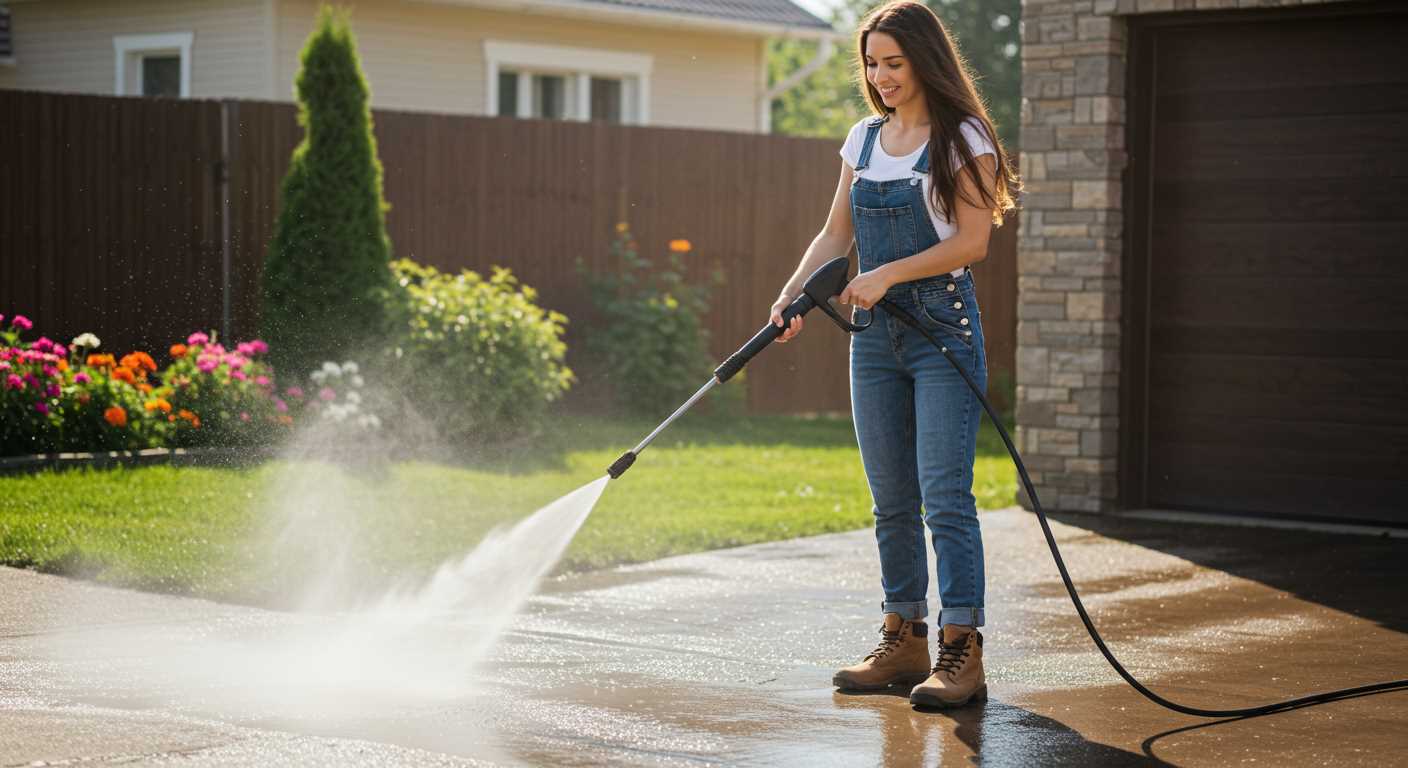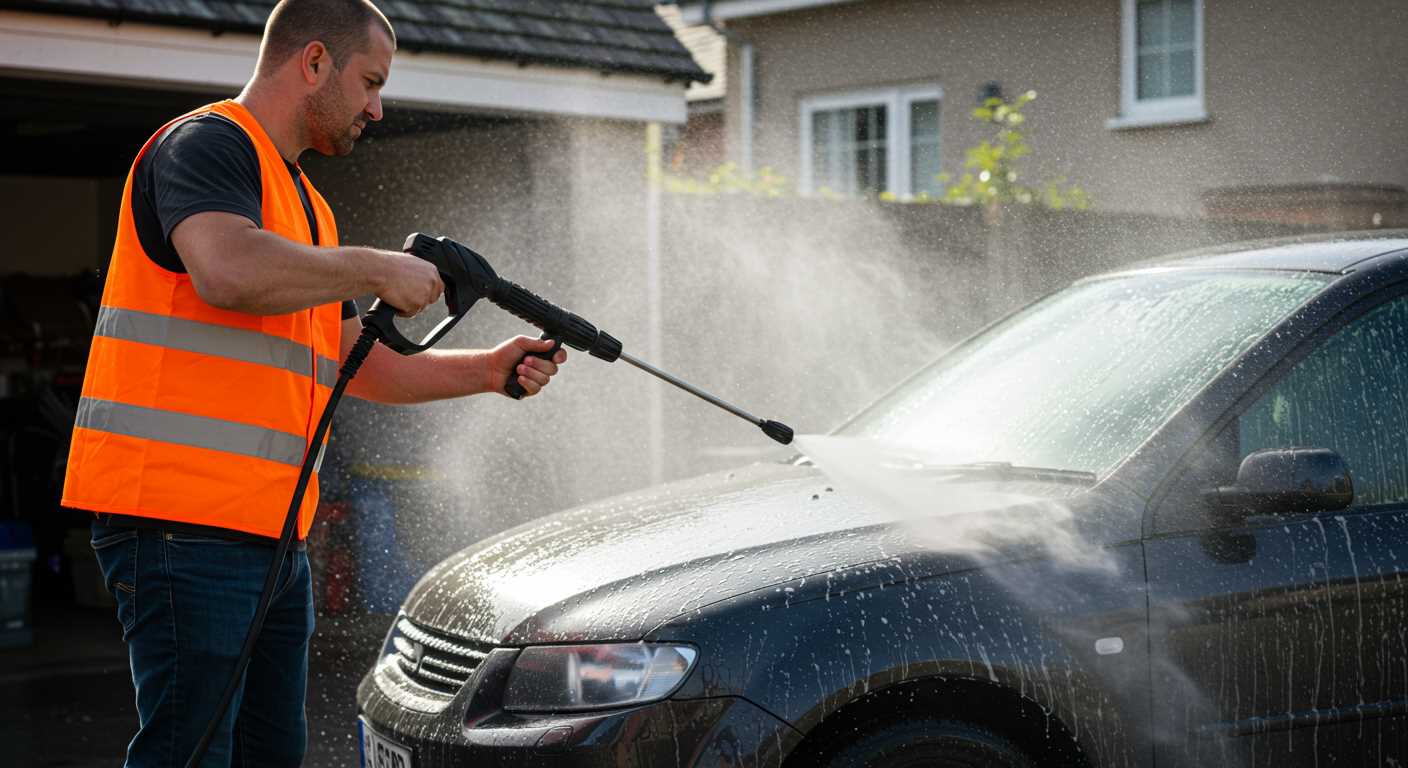




When it comes to tackling tough cleaning tasks around the home or on the job, having the right tools can make all the difference. In this article, I will delve into the world of pressure washers, focusing specifically on the importance of flow rate in achieving optimal cleaning results. Whether you’re a homeowner looking to spruce up your driveway or a professional contractor seeking reliable equipment, understanding flow rate is crucial.
This article is designed for anyone considering the purchase of a pressure washer, from DIY enthusiasts to seasoned professionals. I will explore the various flow rates available in the market and how they can impact your cleaning efficiency. Additionally, I will provide insights into the best models currently available, highlighting their features, performance, and value for money.
By the end of this article, you will have a clearer understanding of what to look for in a pressure washer with an optimal flow rate, enabling you to make an informed decision that suits your specific cleaning needs. Join me as we uncover the best flow rate pressure washers to elevate your cleaning game!
Understanding Flow Rate and Its Importance
When it comes to pressure washers, flow rate is a critical factor that significantly influences their performance. Flow rate, measured in litres per minute (L/min), refers to the volume of water that the machine can deliver in a given time. A higher flow rate means more water is being used, which can lead to more effective cleaning, especially on larger surfaces or tougher grime.
Understanding the importance of flow rate helps users select the right pressure washer for their specific needs. While pressure, measured in bar or psi, is often highlighted, flow rate plays a vital role in ensuring that the cleaning task is completed efficiently and effectively. A balance between pressure and flow rate is essential for optimal performance.
The Role of Flow Rate in Cleaning
Flow rate contributes to the overall cleaning power of a pressure washer in several ways:
- Efficiency: A higher flow rate allows for quicker rinsing and reduces the time spent on each cleaning task.
- Coverage: More water can cover larger areas, making it easier to clean extensive surfaces without constantly refilling the water supply.
- Soil Removal: Increased water flow can help in dislodging stubborn dirt and debris, enhancing the effectiveness of the cleaning process.
While choosing a pressure washer, it’s essential to consider the flow rate in conjunction with other specifications. A machine with a high flow rate but low pressure may not be suitable for all tasks, just as one with high pressure and low flow may struggle with larger jobs. Understanding these dynamics ensures that users can make informed decisions tailored to their specific cleaning requirements.
Models with Exceptional Flow Rates
When selecting a pressure washer, the flow rate is a crucial factor that significantly impacts its cleaning efficiency. A higher flow rate means that more water is delivered through the nozzle, which can help to remove dirt and grime more effectively. Therefore, exploring models known for their exceptional flow rates can lead to better cleaning results, especially for larger areas or tougher stains.
In the realm of pressure washers, some models are designed to combine high flow rates with powerful pressure levels. This combination not only enhances cleaning performance but also ensures that users can tackle a variety of tasks, from cleaning patios to washing vehicles. The following features are often found in models with impressive flow rates:
- High Performance Pumps: These pumps are engineered to maintain consistent pressure while delivering a substantial amount of water.
- Adjustable Nozzles: Models equipped with adjustable nozzles allow users to modify the flow rate according to the task at hand, providing versatility.
- Durable Construction: Robust materials ensure longevity and reliability, which is essential for frequent use.
In summary, models with exceptional flow rates provide users with the power needed for efficient cleaning. When considering a pressure washer, it’s essential to assess the specifications and features that contribute to its overall performance, ensuring that the selected model meets individual cleaning needs.
Comparative Analysis of PSI vs Flow Rate
When selecting a pressure washer, the two most critical specifications to consider are the PSI (pounds per square inch) and the flow rate, typically measured in gallons per minute (GPM). Both factors play a significant role in determining the effectiveness of the machine for various cleaning tasks. Understanding how PSI and flow rate interact can help users make informed decisions based on their specific needs.
PSI measures the pressure at which water is expelled from the nozzle. A higher PSI indicates greater force, making it ideal for tackling tough stains and grime. In contrast, flow rate refers to the volume of water that the washer can deliver. A higher flow rate allows for quicker coverage of large areas, making it essential for cleaning expansive surfaces efficiently. Therefore, while PSI is crucial for removing stubborn dirt, the flow rate is equally important for overall cleaning speed.
Balancing PSI and Flow Rate
When evaluating pressure washers, it is important to consider how PSI and flow rate complement each other. For optimal performance, a balance between these two specifications should be sought. Here are some key points to consider:
- High PSI, Low Flow Rate: Ideal for tough stains on smaller surfaces but may require more time to rinse away detergent.
- Low PSI, High Flow Rate: More suitable for rinsing or cleaning larger areas but may struggle with stubborn grime.
- Moderate PSI and Flow Rate: Often provides a versatile solution that can handle a variety of cleaning tasks effectively.
Ultimately, the choice between PSI and flow rate should align with the intended use of the pressure washer. For example, homeowners looking to maintain their driveways may prioritise higher PSI, while those cleaning patios or decks may benefit from a higher flow rate. Therefore, understanding the relationship between these two specifications is essential for achieving the best results in your cleaning endeavours.
Key Features to Look for in High Flow Rate Pressure Washers
When choosing a high flow rate pressure washer, understanding the key features can significantly enhance your cleaning efficiency and overall experience. These machines are designed for various tasks, from residential cleaning to more demanding commercial applications. Therefore, knowing what to look for is essential for making an informed decision.
One of the primary factors to consider is the water flow rate, typically measured in litres per minute (LPM). A higher flow rate can improve the cleaning process, allowing for quicker removal of dirt and grime. However, it’s equally important to balance this with the pressure output, measured in pounds per square inch (PSI), for optimal cleaning performance.
Essential Features
- Adjustable Pressure Settings: This feature allows users to modify the pressure according to the surface being cleaned, preventing damage to delicate materials.
- Durability and Build Quality: Look for pressure washers constructed from high-quality materials that can withstand harsh environments and frequent use.
- Ease of Use: Ergonomic designs, intuitive controls, and lightweight construction can enhance user experience and manoeuvrability.
- Mobility: Consider models with large wheels and a compact frame, making it easier to transport the unit across different surfaces.
- Versatile Attachments: A variety of nozzles and brushes can significantly expand the range of cleaning tasks the pressure washer can handle.
In conclusion, when selecting a high flow rate pressure washer, pay attention to these essential features. They not only contribute to the efficiency of the machine but also ensure a safer and more enjoyable cleaning experience.
Maintenance Tips for Optimal Flow Performance
To ensure your pressure washer operates at its best, regular maintenance is essential. Proper upkeep not only prolongs the lifespan of the machine but also maximises its flow rate, ensuring efficient cleaning. By following a few simple maintenance tips, you can maintain optimal flow performance and avoid common issues that may hinder your pressure washer’s effectiveness.
One of the key aspects of maintaining flow performance is to keep the machine clean and free from debris. Regularly inspect and clean the nozzle, hoses, and filters to prevent clogs that can restrict water flow. Additionally, using the correct type of detergent will help in preserving the internal components of your pressure washer.
Essential Maintenance Practices
- Inspect and Clean the Nozzle: A clogged nozzle can drastically reduce flow rate. Clean it regularly to ensure a steady water stream.
- Check Hoses for Leaks: Inspect hoses for signs of wear and tear. Replace any damaged hoses to prevent loss of pressure.
- Maintain the Pump: Regularly check the pump for proper lubrication and consider replacing the oil if necessary.
- Use Clean Water: Always use clean water in your pressure washer to prevent mineral build-up and clogs.
- Store Properly: After use, store your pressure washer in a dry and clean environment to protect it from damage.
By adhering to these maintenance tips, you can enhance the flow performance of your pressure washer, ensuring it delivers effective cleaning power whenever needed. Regular checks and timely interventions can save you from costly repairs and keep your equipment in top condition.
Real-World Applications of High Flow Rate Washers
High flow rate pressure washers have become indispensable tools in various industries and residential settings. Their ability to deliver high volumes of water at pressure makes them ideal for tasks that require efficient cleaning, such as removing stubborn dirt, grease, and grime. From commercial settings to home use, these washers provide significant advantages in terms of speed and effectiveness.
In professional environments, high flow rate washers are often employed for heavy-duty cleaning tasks. Their capacity to cover large areas quickly reduces downtime and increases productivity. Additionally, the versatility of these machines allows them to be used in various applications, making them a valuable asset for contractors, fleet services, and maintenance teams.
Key Applications
- Industrial Cleaning: Factories and warehouses often use high flow rate washers to clean machinery, floors, and equipment, ensuring a safe and tidy working environment.
- Vehicle Maintenance: Auto detailing shops benefit from high flow rate washers for cleaning cars, trucks, and buses, as they can efficiently remove dirt and contaminants from surfaces.
- Construction Sites: After construction projects, these washers are vital for cleaning tools, equipment, and surfaces, helping to prepare them for the next phase of work.
- Outdoor Surfaces: Homeowners utilise high flow rate washers for cleaning patios, driveways, and siding, restoring their appearance and preventing damage from accumulated dirt.
In conclusion, high flow rate pressure washers serve a multitude of practical applications across various sectors. Their efficiency, effectiveness, and versatility make them essential for maintaining cleanliness and hygiene in both commercial and residential environments.
Customer Reviews: User Experiences and Recommendations
When it comes to choosing the best flow rate pressure washer, customer reviews provide invaluable insights into real-world performance and user satisfaction. Many users highlight the importance of flow rate in achieving effective cleaning results, particularly for larger surfaces such as driveways and patios. Customers have reported that pressure washers with higher flow rates often lead to quicker cleaning times and less effort required, making them a popular choice.
In addition to flow rate, users frequently recommend considering factors such as ease of use, portability, and accessories included with the pressure washer. Many customers appreciate models that come with various nozzles and attachments, allowing for versatile cleaning applications, from delicate surfaces to heavy-duty tasks.
Key Takeaways from User Reviews:
- Higher flow rates generally result in better cleaning efficiency.
- Portability and weight are crucial for ease of handling.
- Additional accessories enhance the versatility of the pressure washer.
- Reliable customer service and warranty options are highly valued.
Overall, user experiences indicate that investing in a quality pressure washer with an optimal flow rate can significantly improve cleaning tasks. Customers recommend researching models that fit specific cleaning needs while also considering user-friendly features and support options to ensure a satisfying purchase.
Top 10 Best Flow Rate Pressure Washer






Best Flow Rate Pressure Washer
Features
| Part Number | SQ-222-2 |
| Model | SQ-222 |
| Color | black |
Features
| Part Number | 310448028 |
| Model | RY31RN01VNM |
| Color | Green |
Features
| Part Number | XJETM5-13K |
| Model | XJETM5-13K |
| Color | White |
Features
| Model | 7abd6aa0-b969-404f-a9df-c10d65f4cb7d |
| Color | Silver |
Features
| Part Number | FZVAAK-3 |
| Model | FZVAAK-3 |
| Color | Green |
Video:
FAQ:
What factors should I consider when choosing the best flow rate for a pressure washer?
When selecting a pressure washer, consider the flow rate measured in litres per minute (LPM) and the pressure measured in bar or PSI. A higher flow rate means that more water is used, which can be beneficial for rinsing away dirt and grime. However, it’s important to match the flow rate with the type of cleaning task. For instance, light tasks like washing a car may require a lower flow rate, while heavy-duty tasks such as cleaning driveways may need a higher flow rate for effective cleaning.
How does the flow rate impact the cleaning power of a pressure washer?
The cleaning power of a pressure washer is determined by the combination of its flow rate and pressure. While pressure (measured in bar or PSI) is important for removing tough stains, the flow rate plays a significant role in how quickly and effectively debris is washed away. A pressure washer with a high flow rate can deliver more water, helping to cover larger areas more efficiently and ensuring that dirt is rinsed off thoroughly.
Is a higher flow rate always better for a pressure washer?
Not necessarily. While a higher flow rate can be beneficial for certain tasks, it may not always be the best choice for every situation. For lighter cleaning tasks, a lower flow rate can be sufficient and more water-efficient. Additionally, using excessive flow for delicate surfaces could lead to damage. It’s important to choose a pressure washer with an appropriate flow rate that matches the specific cleaning task at hand.
Can I use a pressure washer with a low flow rate for heavy-duty cleaning jobs?
Using a pressure washer with a low flow rate for heavy-duty jobs can be challenging. While it may still work, the cleaning process will likely take longer, and you may not achieve the same level of cleanliness as with a higher flow rate model. For tough stains and surfaces like concrete, a higher flow rate is usually more effective, as it helps to flush out dirt more efficiently.
What is the typical flow rate range for residential pressure washers?
Residential pressure washers typically have a flow rate ranging from 6 to 12 litres per minute. Light-duty models usually operate at the lower end of this range, while heavy-duty models can reach the higher end. It’s advisable to choose a flow rate that suits your cleaning needs; for example, if you primarily clean vehicles or patios, a model with around 8-10 LPM would be adequate for most tasks.
What factors should I consider when choosing the best flow rate for a pressure washer?
When selecting the ideal flow rate for a pressure washer, several factors come into play. First, consider the type of cleaning tasks you intend to perform. For light tasks like washing cars or patio furniture, a washer with a flow rate of 1.5 to 2.0 GPM (gallons per minute) is usually sufficient. For medium-duty tasks, such as cleaning driveways or decks, a flow rate between 2.0 and 3.0 GPM is recommended. Heavy-duty jobs, like removing stubborn stains or cleaning large surfaces, may require a flow rate above 3.0 GPM. Additionally, the pressure output (measured in PSI) should be balanced with the flow rate to ensure effective cleaning without damaging surfaces.
How does the flow rate impact the cleaning performance of a pressure washer?
The flow rate of a pressure washer significantly influences its cleaning performance. A higher flow rate allows more water to be delivered to the surface being cleaned, which helps to wash away dirt and debris more efficiently. This is particularly beneficial for larger areas or surfaces that have accumulated tough grime. However, it’s important to balance flow rate with pressure; too high a flow rate without adequate pressure may lead to ineffective cleaning, while too much pressure with insufficient flow may cause damage to delicate surfaces. Therefore, understanding the relationship between flow rate and pressure is crucial for achieving optimal results in various cleaning scenarios.




.jpg)


